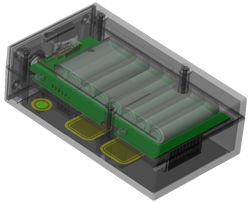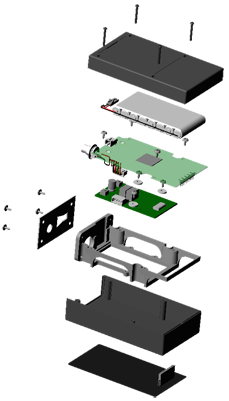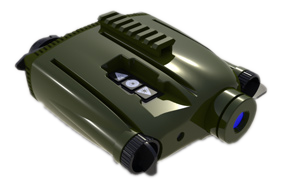Inventors
Developing a product idea
Many people have an idea for a product that would make things easier or better for someone. If they had the money and knew how to develop it into a product, they could achieve their dream of becoming independent. Although many of those ideas are good, most of them drop by the wayside for lack of resources or know-how in developing a product. If you have an idea worth developing, you don't have to let it drop by the wayside. We can help you develop your idea and walk you through the process of turning it into something you can sell.
Here are the critical steps to developing and selling your product.

1.Develop your idea.
2.Establish the uniqueness of your idea.
3.Design a product that embodies your idea.
4.Protect your idea.
5.Make a prototype and test it.
6.Market your product.
1. Develop your idea.
- 1. What does it do?
2.Who will use it?
3.Why will they use it?
4.How will they use it?
5.When will they use it?
6.Where will they use it?
You have to sell your product to other people. Only if they have a need or desire for your product will it ultimately be worth anything to you. Think through your idea as a possible customer, and be totally honest with yourself as you do. The TV show American Inventor showcased a lot of inventors who were in love with their own idea but couldn't sell it to anyone else. Only if you can sell your idea to someone else is it worth anything to you.
2. Establish the uniqueness of your idea.
Check www.uspto.gov and search for similar inventions. You can also pay for a patent search by a patent agent or patent lawyer. There are also free patent search services on the Internet.
Look in likely places for your product to be used and try to determine if the function your product serves is already served by an existing product or method.
Determine the unique features your product has that differentiate it from everything else on the market. List them. These will become claims in your patent application and will be cited by your patent attorney in your application for patent.
3. Design your product
This is where your idea takes physical form. Depending on your idea, it may be necessary to do mechanical, electrical, or optical design to develop your product; or, your product may be a simple shape or configuration of materials for a consumer product. Industrial Design goes beyond engineering and makes your product appealing to your customers. There is usually some industry-specific understanding that must be incorporated into your product. Depending on the industry your product addresses, there may be certain standards and practices that must be incorporated into it. Your design must be developed and refined enough to establish patentability. A general idea like “a pencil with fancy graphics” is not patentable. Your idea must be unique, specific enough to clearly illustrate what it is, and it must work.
This is where Sauter Industrial Design can help you put your product into physical form. We are very familiar with methods of manufacture, what it takes to get a product produced, and the timeline involved in that process.
4. Protect your idea.

Create a description of your invention. Show as many pictures as necessary to clearly explain it, write an abstract describing what it does, and list every unique benefit that your invention has. Find a patent attorney and have them prepare and file a patent application for you. There is significant cost and paperwork involved with this step, so be sure you've done your homework on steps one, two, and three before starting this step. If you haven't done your homework, you may be wasting your time and lots of money.
If you need help developing your product, be sure whoever you are working with signs a non-disclosure agreement (NDA) and will not talk about your design without your express permission.
5. Make a prototype and test it.
Using materials that at least approximate the design, build a prototype that is usable and testable. Test it to your own satisfaction and make any necessary changes in the design. We can help you find someone to build a prototype.
Put prototypes into the hands of people who are likely to buy it and use it. Take extensive notes on their reactions to it and what happens to it. Gather as much information as possible and organize the data so you can make sense of it. You may wish to further develop and test your design based on this information.
Be aware that developing a production design is a big step beyond a prototype and involves significant costs.
6. Market your product.
By now you should have determined who will buy your product, initial quantities to sell, how they will be sold, for how much, and how you will deliver the product. At this point, you are selling your idea to people who will buy large quantities of it. You will determine whether or not you want to start your own company or just sell the idea to someone else. Your business decisions at this point are critical to your future success.
If you have any questions, feel free to contact us. We'll be glad to help.
info@sauterindustrialdesign.com
Royal Oak Show
Contact Us
Sauter Industrial Design
1029 Northwest Hwy #294
Garland, TX 75041
Phone: (972) 226-1300
Fax: (214) 292-8732
info@sauterindustrialdesign.com
